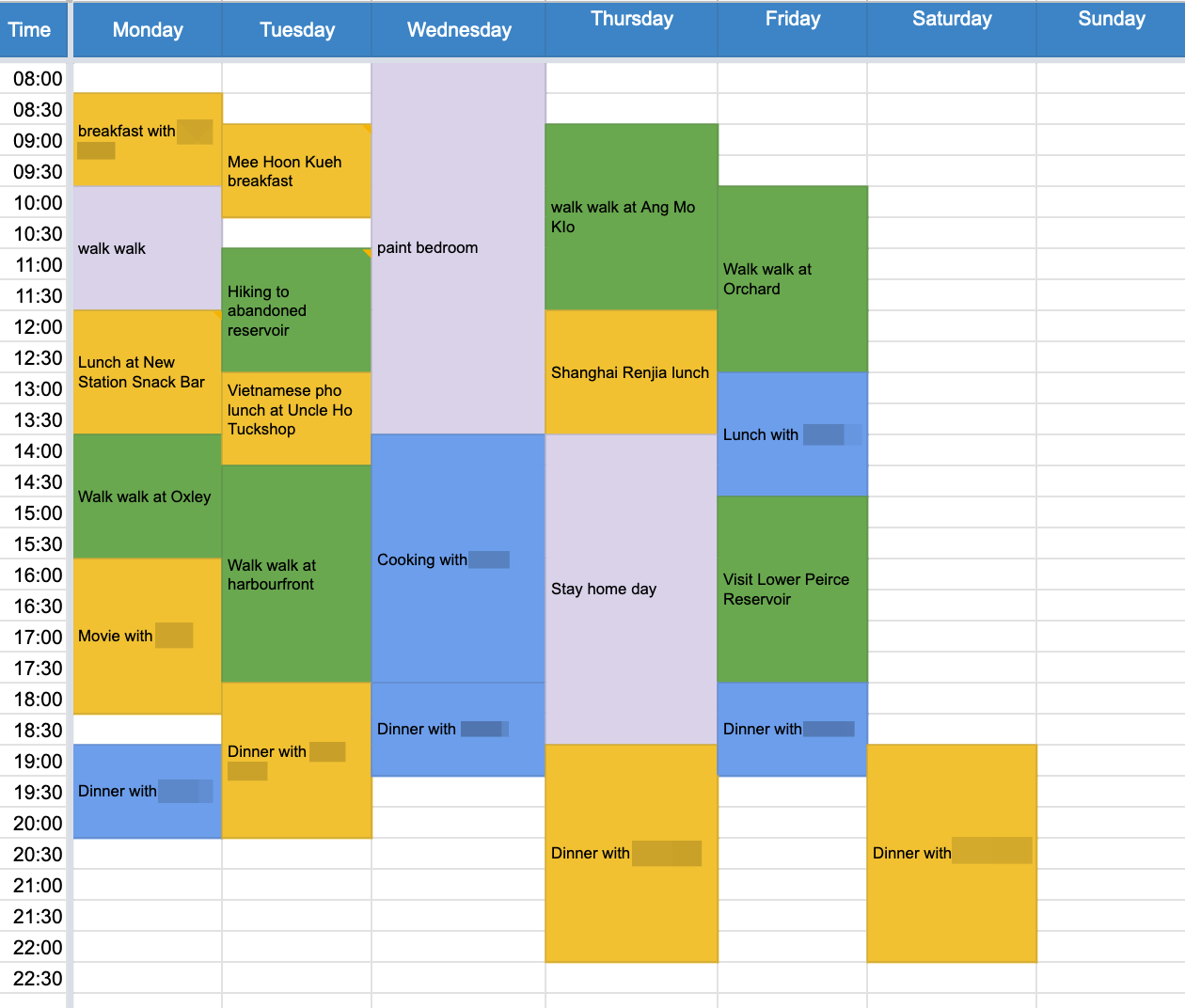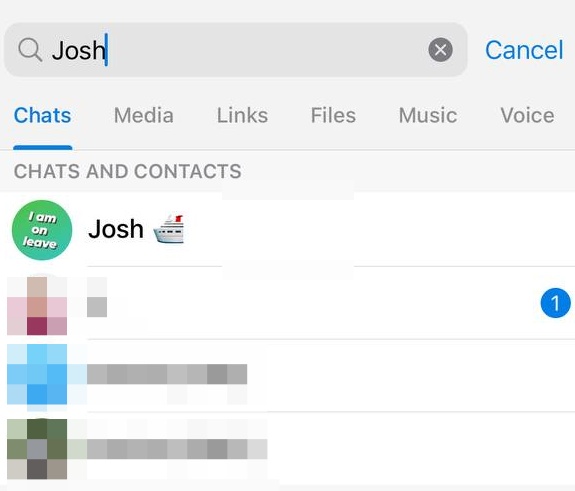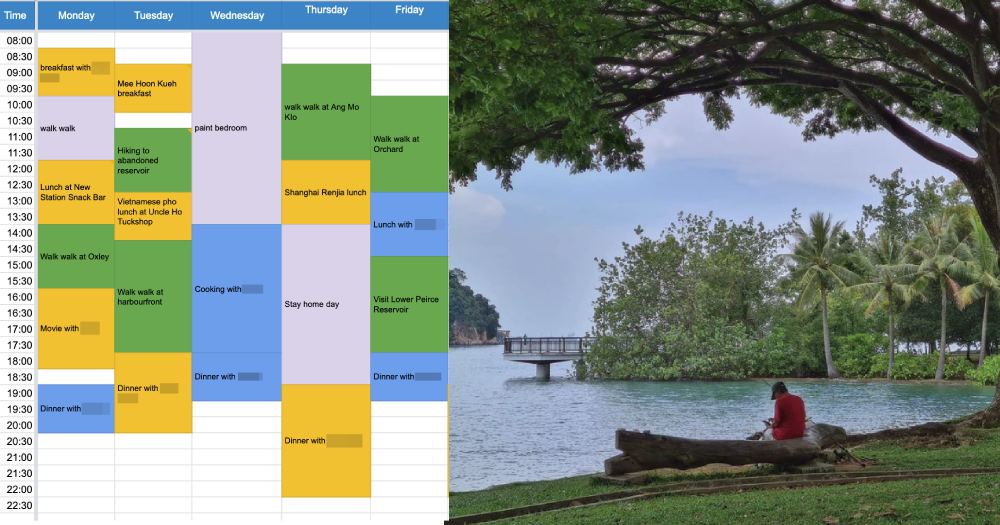2021 has been quite exceptional for many people, including yours truly.
Aside from the once-in-a-lifetime experience of riding through a protracted pandemic, it was also the first time in my career I ever had to clear 31 days of unused leave that were accumulated over two years.
"Where got time to take leave???"
"Wah, why do you have so many days of leave?" my colleagues asked.
"No time to take leave because of work lor," came my reply.
The problem of accumulated, unused leave, was reported by CNA in Dec. last year. It was said that given the current WFH situation, employees may also tend to not go on leave as they do not feel the need to 'getaway' from the office.
If you're a full-time employee in Singapore, you might be able to empathise: The endless grind of work and work and more work, to the point that you're expected to complete a hundred and one things in the span of a nine-hour work day, five days a week, and if you're lucky, on the weekends too.
"Where got time to take leave???" was the common refrain.
But if I'm being completely honest, the ever-growing mountain of work was not the only reason why I didn't touch my leave.
Leave, you see, is very precious.
My 15 days of annual leave represent 15 glorious days of freedom from work — 360 hours to do anything but work and get paid for it.
It's a scarce reward, earned in exchange for my endless toiling away in an air-conditioned office, that had to be maximised.
I would only dip into my pool of annual leave whenever I wanted to travel overseas — which I happily did over the years to fly to places like Hokkaido, Ho Chi Minh, Phnom Penh and Yogyakarta — because what could be further from work than literally being 5,000km away?
How I tried to maximise my leave
I didn't get a chance to travel in 2019, unfortunately, and as it turned out, 2020 was the same. That was how I ended up with 31 days of leave to clear earlier this year, which frankly, caused a bit of a headache (yes, having too much leave is such a pain, indeed).
In the spirit of maximising my leave, I came up with an itinerary, packing my off days with meet-ups and activities (I even painted my own room). It was fun at the start because for a moment, it felt like I was making really good use of my annual leave.
But you know what they say about having too much of a good thing. There was so much to do that it felt increasingly less like leave and more like work, ironically.
 My itinerary for a week-long break. As you can see, by Saturday, I was too exhausted to do anything else. 10/10 wouldn't recommend.
My itinerary for a week-long break. As you can see, by Saturday, I was too exhausted to do anything else. 10/10 wouldn't recommend.
I did this for a couple of week-long breaks and each time, I returned to work feeling like I had done everything else but rest.
Round 2: I did absolutely nothing at all
Finally, when it came to a three-week long break, ripe with the promise of endless activities and fun, I realised that I was too tired to plan anything. And so just like that, I let 15 precious days of leave slide by surfing Netflix in bed and eating chips.
I didn't get to cycle or go owl-spotting at Pasir Ris or visit a Japanese teahouse-inspired cafe, but it was perfect because I felt rested.
(Related: Read about my colleague who used to think that staying in Singapore while on leave was a waste of time, but changed his mind. Well, kinda.)
Some may feel the need to pack their schedules in order to not "waste" the day (something which I clearly tried to do initially), and that's fine. But you shouldn't feel pressured to do the same.
Leave should be maximised indeed — for rest.
A quick informal survey around the office found that my colleagues have different ways of recharging.
One went on a hike from Pasir Ris to Yishun. Another chose to sit in bed vibing to music for hours on end. Another chose to go on a staycation at Sentosa because "it's far away from the city and far away from work".
So do whatever floats your boat — as long as you don't return to work feeling like you need another long break.
But then another problem surfaced...
Not doing much at all while on leave subsequently revealed another problem that I had with taking leave: The inability to disconnect from work fully because I'm such a kaypoh person.
Compared to when my schedule was tightly packed, I was no longer distracted by all the places I had to be and things I had planned to do.
I found myself reaching for my phone constantly (and instinctively), checking for updates in my work group chats in case I missed out on a particularly juicy news alert, and surfing Facebook for interesting stories when I was bored.
It's a personality trait which lends itself well to my line of work, but not so good when it's time to rest.
For most workers who struggle with taking leave though, it's not so much FOMO, but the fear of not meeting work expectations even while on leave.
"If I don't send John my reply now, the project cannot move forward!"
"My boss needs me in a conference call now!"
If these sound familiar to you, then you should know that not being able to disengage from work when you're on leave can lead to whole host of stress-related problems like burnout, irritability, mood swings, and cardiovascular issues.
Set clear boundaries
Something that I have found to be extremely helpful for me is to set clear boundaries between work and personal time. In other words, I would tell the whole wide world that I'm on leave.
I set an "Out of office" auto-responder exactly at 6.30pm on my last day of work and let it run for the entire length of my leave (if you need help crafting one, here are some useful examples), highlighting very clearly that I'm not available right now and if you need something from me, please feel free to contact XYZ instead.
And of course, in order to do this, you need to be able to hand over your work to your very able colleagues and let everybody involved know who is picking up the slack when you're away.
Here's a neat trick that I picked up from a colleague recently: Setting your display picture to a text which reads "I AM ON LEAVE".
 Unless your colleague is really obtuse, changing your display picture to something like this is usually enough to deter those bearing work requests.
Unless your colleague is really obtuse, changing your display picture to something like this is usually enough to deter those bearing work requests.
Other helpful tips to compartmentalise work and leave time include muting work chat notifications and refraining from using your work laptop for leisure purposes.
A healthier way of spending your leave needs a change in mindset
I don't know about you, but I am all for finding a more sustainable way of working and resting.
"Just f*cking don't care about the work lor," was a colleague's sagely advice when I asked her how she disconnects from work when she's on leave.
 Via.
Via.
Setting clear work-rest boundaries and actually putting in the effort to disengage from work is actually not as effective without a change in perspective about work.
A colleague captured it quite succinctly when she said, "You're dispensable."
No work truly needs you to be around 24/7 to the point of sacrificing your rest time and your physical and mental health.
We all need to strike a balance between work and rest, which is all the more important in today's culture of overworking.
Being unable to properly go on leave is just one of the many symptoms of a toxic working habit, which can lead to burnout and higher stress levels.
So the next time you take leave, make sure you try to disengage, relax, and rest so that you'll be ready to tackle your work again when you return.
Top images by Joshua Lee.
If you like what you read, follow us on Facebook, Instagram, Twitter and Telegram to get the latest updates.
